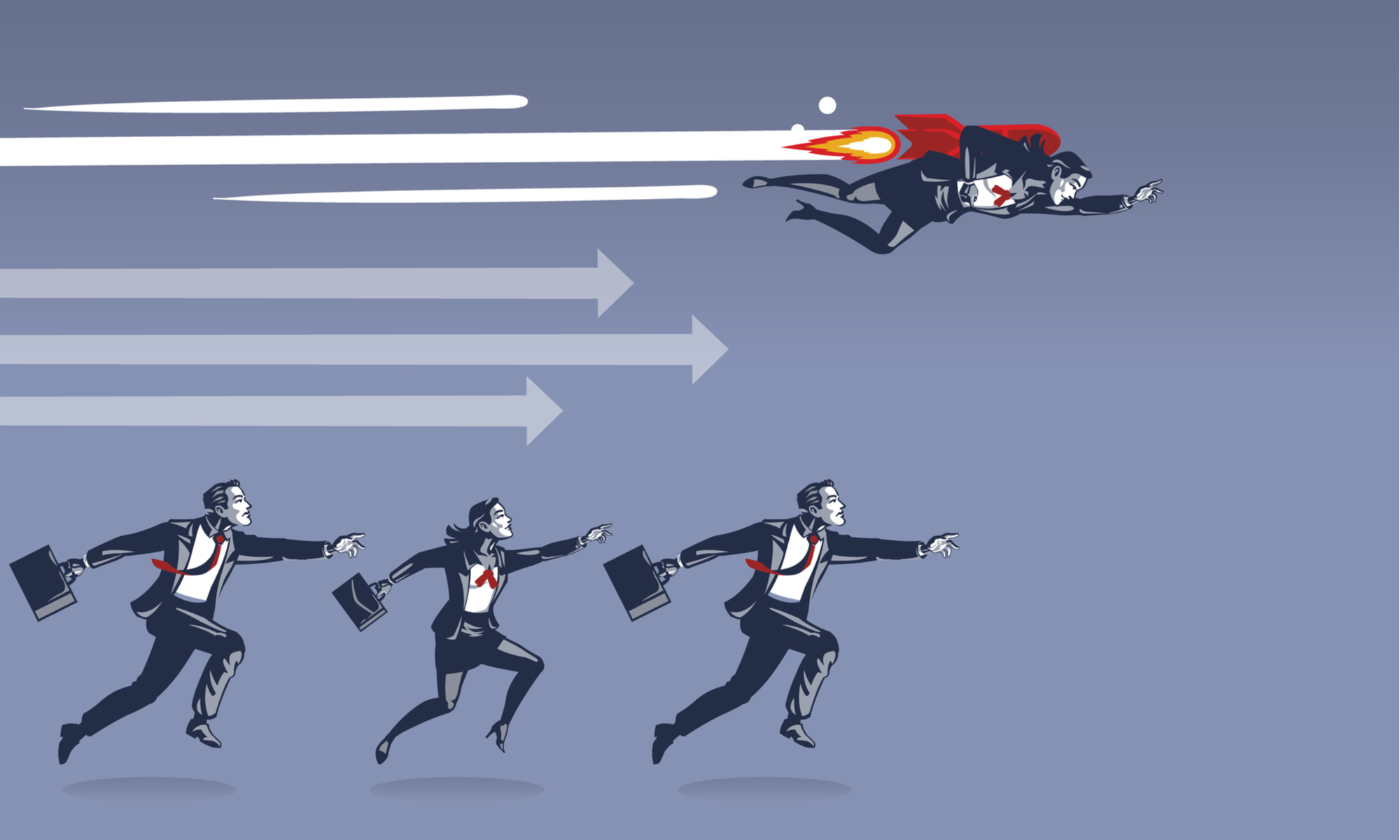10 Ways to Close More Sales Deals, Faster

COVID-19 accelerated the changes to the association sales process that were already taking place prior to the pandemic's arrival. As our business development teams work to improve our associations' bottom lines, closing sales in this new environment is increasingly important and challenging. Ryan Dohrn is a global sales and marketing advisor with a focus on events and media sales. The following article, 10 Ways to Close More Sales Deals Faster, originally appeared on Ryan's website and we are sharing Ryan's ideas with our PAR community.
Read below for 10 of Ryan's time-tested ideas on closing sales.
1. Present Options and Recommendations in the First Sales Meeting
I’ve said this before in the past, but I want to reinforce this simple fact: the conversion rate is 70% higher when you recommend a product. A full sixty percent of people make decisions based on FOMO, that fear of missing out.
So why it is that so many sales people go on a discovery meeting and then leave that meeting to create a customized solution and proposal?
In some instances, I get it—this specialization that you’re trying to bring in front of your customers. But it’s hard enough to get meetings as it is, much less have to schedule a meeting, go to discovery, leave the meeting to create a proposal, come back and track the person down to present the proposal. Then after all that they’ve got to think about it. And then you’ve got to track them down again.
You might say, “My process is a lot more streamlined.” But I doubt it. I’m here to be real with you.
So when I’m on a sales call, I’m ready to present options in that very first meeting. And I am ready to make recommendations and proposals on the spot.
2. Use Research to Your Advantage
If you want to move from the transactional selling that has been necessary during COVID to relational selling, you’ve got to use research to connect more deeply with customers.
As I share in my sales training, I use tools to do this. LinkedIn is one obvious example. And some of us have LinkedIn Sales Navigator, and it’s a really great tool. I’m also using a Chrome extension with a website called Crystal Knows (www.crystalknows.com). And the shortcut is that Crystal does virtual personality profiling. The extension syncs with LinkedIn when you’re in Chrome to pull up personality profiles and traits of the people that you’re looking at. This tool is not free, but it’s not expensive, either. And I use it all the time.
So, I’m using research to connect more deeply with sales clients. It’s called “building quick trust.” And “quick trust” must be built within 5-10 seconds. You’re going to do that most effectively by having more information on the customer, their company, etc. So dig in on LinkedIn and make sure you’re prepared for all your calls.
I realize this is kind of 101, but are you actually doing it?
3. Ask Better Questions
Your questions simply have to be better. One of your main questions that makes me nuts and that I hear when I’m doing sales training is this: “Tell me more about your business.” C’mon, you’re better than that. Or “What keeps you up at night?” Okay, c’mon, you’re better than that one, too. And then, “What’s your budget?” You can do better than that.
Those are three questions we do need to ask, but maybe ask them in a more vibrant kind of way so that we don’t sound like every other salesperson that’s calling on that customer.
Here are four that I really like to ask:
1. "When you agreed to meet with me, what business challenge or problem were you hoping that I could help you solve?” That is one of my absolute favorites.
2. “If I could give you a magic wand that you wave, what would you want to see happen as far as our relationship goes—what’s your buy-in from me?” Or “If I could wave a magic wand for you, what business challenge could I help you resolve?”
3. “When you think about competing here in our community and against others in your industry, do you want to be seen as having some sort of a presence out there? Do you want to be competitive? Or do you want to be dominant?”
And the reason this works for me is because, sure, I can ask them their budget for buying whatever product I’m selling. But they’re going to give me a number based on their reality.
Let me stress it again, when I ask this question and give them those three options, that’s going to lead me towards a budget number that’s based more in actual reality–rather than simply their reality.
The other question I like to ask on a regular basis is,
4. “If everything went perfectly, if our relationship was perfect, you buy the product I’m selling, and then … what do you want the end result to be? What would the perfect end result be for you?”
Or, more simply, you could say, “If I’m going to keep you for a lifetime as a customer, what do I need to do?”
I think those are just better questions than, “What keeps you up at night?”
4. Prepare Yourself to Talk About COVID
In-person events are returning, but COVID is still part of the conversation. Be prepared to talk about it.
Jot down the most common objections you’re going to get on one side of a piece of paper. And on the other side jot down what your answers are going to be. And be prepared for delays.
5. Revamp Your Proposal
You’ve got to think about revamping your sales proposal based upon the research that I hit on before. Let me give you two tidbits that might help motivate you to do this.
From our Sales Training World research, we’ve found that when we looked at 1,200 pages of 100 different proposals that 79% of our test users simply scanned the proposal, and only 16% actually read it. So I think we sales pros need to remove about 50% of the text from our proposals.
Another telling find in our research is that nearly all of the most successful businesses we looked at had proposals that presented three pricing options.
And then, the last finding was that these successful businesses used proposals that were full of pictures and a wealth of examples.
So, be thinking of the research out there and revamping your slide decks, your capabilities decks, and these kinds of sales tools. And again, remember that only about 16% of people actually read what it is you’re putting in front of them.
6. Give More Than One Pricing Option
Why do I love three pricing options? I love three pricing options and I stress them in my sales training because if you give somebody one choice, it’s sort of a yes or a no. If you give them two choices, now you’re starting to get them thinking. But if you give them three choices, they will typically buy the middle option.
So you create your pricing and your proposals around the middle option.
To reiterate, present three pricing options. I want to see a good, better, best in almost every situation. Or a presence, competitive, dominant—or a gold, silver, bronze. However you word it, present three pricing options if you want to sell more.
7. Set a Very Specific After-Proposal Follow Up Plan
So you’re on the meeting (remember, I suggest you go there with a proposal), and you’ve gone there ready to sell them something—ask great questions, share testimonials, and show them what you’ve got.
Then when the client says, “I need to think about it,” you’ll be ready for that too, and you’ll be ready to implement three steps, which are No. 1, tell them “Let me back up and in 48 hours check in.”
Then No. 2, if they need more time and 48 hours isn’t enough, ask them, “If you need more time, what are we going to do?”
And finally, No. 3, ask “What if we miss each other?” which is how I psychologically try to program my customers. “If you stand me up for this date, then what?”
It’s also worth noting that we need to be prepared for when their answer is “no.” I’m not going to beat them up about it. But I might say, “I’d rather get a ‘yes,’ but if it’s going to be no just tell me ‘no.’” Or, “If the timing isn’t right, tell me ‘no’ so I can quit bothering you.”
A very specific follow up plan that I stress in my sales training is: after I get finished with my sales call, I check back in 48 hours. So, consider these follow-up statements: “If you need more time, let’s text about it.” “If we miss each other, then what?” “What do you need?” And then, “If the answer is no, tell me ‘no,’ I’m not going to beat you up about it.”
8. Talk About the Love You Have for Your Customers
A lot of times salespeople feel like they don’t want to talk about their clients. But you have to.
In the land of COVID, stranger danger is real. People are more likely to buy from you if you’ve helped other people be successful. That’s why I’m always open to share and talk freely about my other clients.
Yet, in nearly every slide deck I see, in just about every proposal that I see, there’s no mention of anybody else that we work with—our clients. Why is that?
“Well, you know, we really can’t talk about other people,” many say. But stop. We’re not talking about being unethical. I’m talking about singing from the mountaintops.
Don’t be afraid. Tell them how much you love your customers and how much they love you, and that they’re going to love working with you, as well.
Go ahead and sing that love from the mountaintops.
9. Get Clear on the Path to Making a Decision
Some people will tell you to step It up in advance. I don’t think it’s the appropriate thing to do. For example, “Okay, what’s your timeline here?” “Do you have the authority to make this decision?” That reminds me of how we used to do things in the ‘80s. And most buyers don’t respond to that.
But if I get to the end of the sales call, and they’re showing excitement, they’re giving me buying signals, I ask them, “So what does your path to making this decision look like? “You seem like you love this idea. Do you love it?” And if they say, “I love it,” then great. I’ll say, “So what’s your path to getting this approved?” and “What do you need from me?”
And then I’ll ask, “What do you think is going to be the biggest roadblock that you’re going to run across? What can I give you—video, can I reformat this slide deck for you, could I record the sales deck using a tool like Loom or Soapbox and give it to you to show your boss?”
A lot of sales trainers out there would say, “Never meet with anyone who’s not the decision maker.” Well, that’s easy to say if you’re not really responsible for selling anything.
I think we have to meet with people that are in the chain of command.
So remember to ask, “What do you need from me?” Get really clear on this with your clients and prospects.
10. Deal with It if Somebody’s Answer is “No”
If you’re going to close more sales deals, you’re going to need to rock through them. If a customer’s answer is no, I’m not going to beat them up about it.
A lot of times people will say, “Never give them the opportunity to say ‘no.’” Okay, that’s a copyright 1996.
You have to recognize that in today’s world we’re having to resell people all the time. So if you really make them angry because you jump back down their throat when you’re in full-press sales mode … if the answer is “no” or “not now,” your answer should be something like, “We’ll get together and we’ll work together at some point in the future.”
Some people will say, “Well, you never get a second chance to sell them.” I just don’t agree with that. I feel like we have to resell these people over and over again.
If the answer is “no,” that just means “not right now.” And actually, that’s alright.
Rock through those deals.
In closing, remember—I say it all the time—if sales was easy, everybody would be doing it. And they’re not. So we’re either crazy or we’ve found careers that will feed our families for a lifetime.
Interested in Hearing More Great Ideas from Ryan?
Ryan joined PAR for our June 2021 Webcast, Return to Action: Develop and Deliver Event Revenue in 2021. In this idea-filled webcast on event sponsorship, Ryan showed PAR members how to integrate sponsors deeper into events and presented tangible steps for how to grow events and sales in a post-pandemic world. Interested in watching? Check out out webcast archive.

Ryan Dohrn, Global Sales and Marketing Advisor
Ryan Dohrn is a global sales and marketing advisor with a focus on events and media sales. He has had the unique opportunity to work with over 400 companies including several in the Fortune 500 like Disney, ABC TV, and John Deere. Ryan and his wife produce and sell sponsorships for 15 events per year. He is a best-selling business book author, Emmy winner, and has been featured in USA Today, on CNN and, on Forbes.com. His sales strategy ideas and training have impacted over half a billion dollars in sales. Ryan has entrenched himself in the sales and marketing business for over 30 years and still sells today! Learn more about Ryan at http://RyanDohrn.com
